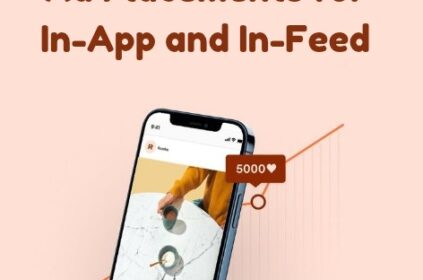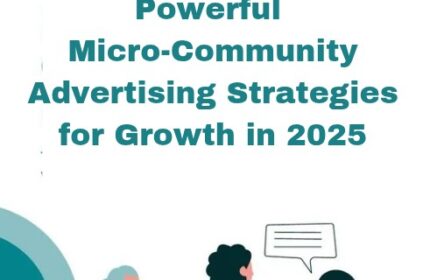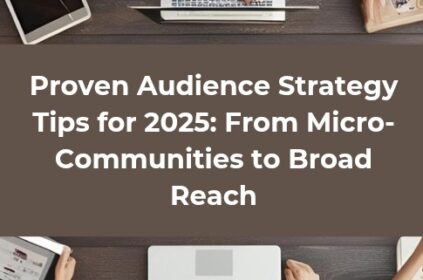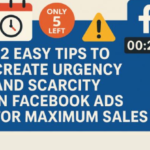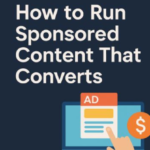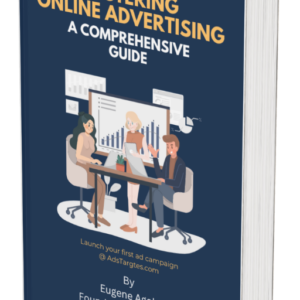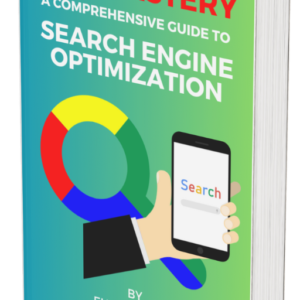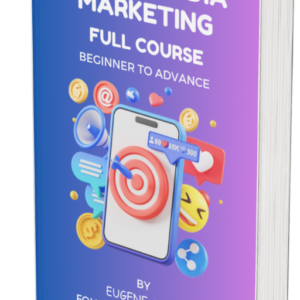Running paid ads without a solid content marketing strategy is like pouring water into a leaky bucket—you keep spending, but conversions never quite add up. Many advertisers struggle with high CPCs, low conversion rates, and audiences that just aren’t ready to buy. If that sounds familiar, you’re not alone.
As competition intensifies and ad platforms evolve, content marketing for paid ads in 2025 is no longer optional—it’s essential. Without strategic content, your ad budget won’t reach its full potential—it’s content that educates, builds trust, and moves prospects closer to buying.
When done right, content marketing doesn’t just attract attention—it nurtures interest, earns credibility, and primes your audience for conversion. It turns cold traffic into warm leads and warm leads into loyal customers.
This blog post breaks down how to actually use content marketing to drive paid traffic that converts—not just clicks. Whether you’re running Facebook Ads, Google Ads, or native ads, these expert tips will help you get more results from every dollar spent.
Let us explore the content marketing strategies that smart digital advertisers are already using to lower costs, boost engagement, and scale faster.
Why Integrate Content Marketing with Paid Traffic?

In the context of digital advertising, content marketing for paid ads in 2025 is no longer a nice-to-have—it’s a must-have. It’s the art and strategy of using valuable, relevant, and engaging content to fuel your paid advertising campaigns. This content can take the form of blog posts, videos, lead magnets, case studies, or landing pages—designed not just to inform, but to convert.
Let’s be honest—paid traffic alone can get expensive fast. Without the right support system, you’re just pouring ad dollars into a leaky funnel. That’s where content marketing steps in—not as an accessory, but as a performance booster.
According to DemandMetric, “consumers prefer getting to know a company via articles rather than ads.” People don’t want to be sold to—they want to be helped. If your content is doing the heavy lifting by educating, answering questions, or addressing pain points, then your paid ads aren’t cold pitches—they’re warm invitations.
Think about it: Would you rather click on an ad that says “Buy Now” or one that says “Discover 5 Ways to Save on [Problem Your Audience Cares About]”? In fact, content marketing generates 3x more leads than traditional outbound marketing—and costs 62% less.
When done right, content marketing serves as the backbone of your paid strategy. It gives your ads something meaningful to promote beyond a discount or a product pitch. You’re not just paying for traffic—you’re giving that traffic a reason to stay, engage, and convert.
The synergy lies in how content fills the gaps that ads alone can’t reach. Paid ads might spark interest, but it’s your content that nurtures that interest into intent and action. And in 2025, where user skepticism is high and competition is fierce, your content becomes your secret weapon for building trust at scale.
So, instead of throwing more money at traffic, ask: What is that traffic landing on? If the answer isn’t helpful content that speaks directly to their needs—you’re missing out.
What Are the Types of Content That Work Best with Paid Traffic?

Not all content is created equal—especially when you’re investing in ads to drive results. To make the most of content marketing for paid ads 2025, you need to align the right type of content with the right intent and platform.
Let’s break down the heavy hitters that actually move the needle:
#1. Blog Posts:
A well-written blog post does more than educate—it nurtures. Promote helpful, SEO-optimized blog articles through Facebook or Google Ads to warm up cold audiences. Instead of selling right away, you’re showing up with value, answering their questions, and building authority. Blog traffic fueled by ads can also be retargeted with stronger conversion offers later. Discover 8 Proven Blog Conversion Techniques that Turn Readers into Customers
#2. Lead Magnets (eBooks, Checklists, Reports):
Lead magnets work like a charm when promoted through platforms like LinkedIn and Facebook Ads. The catch? They must solve a real problem. Whether it’s a quick checklist or an in-depth industry report, high-value downloads convert strangers into email subscribers—creating your own warm audience to nurture and convert over time.
#3. Videos (Educational or Storytelling):
Short-form or long-form, video content is gold—especially on platforms like YouTube, Instagram, and Facebook. Teach, demonstrate, or tell a relatable story. Educational videos are perfect for top-of-funnel traffic, while storytelling builds emotional connection. And let’s not forget: video ads tend to get higher engagement at a lower CPC compared to static creatives.
#4. Webinars and Case Studies:
Ready to close the deal? These content formats are perfect for remarketing campaigns. Webinars offer in-depth value while positioning you as an expert. Case studies showcase real results and proof—ideal for buyers who are close to making a decision but need that final nudge.
In essence, each type of content plays a strategic role. The key is to map your content to the customer journey—awareness, consideration, and decision—then boost its reach with paid traffic. That’s how you scale with purpose, not guesswork. Discover 19 Most Effective Content Marketing Strategies for Traffic Expansion
What Are the Expert Strategies to Drive Paid Traffic Using Content?

#1. Use Facebook Ads to Amplify Blog Posts
Boost high-performing blog content: Identify your best-performing blog posts based on engagement and traffic. Use Facebook Ads to amplify these posts and reach a broader audience. By investing in content that already resonates with your audience, you increase the chances of more conversions.
Retarget readers who stayed over 60 seconds: Facebook allows you to retarget users who engaged with your content for a specific amount of time. By targeting those who spent more than 60 seconds reading your blog post, you’re focusing on individuals who are already interested and are more likely to convert.
Add CTA buttons to drive conversions: Always include clear and compelling call-to-action (CTA) buttons in your Facebook Ads. Whether it’s a link to download a resource, sign up for a newsletter, or make a purchase, a strong CTA guides the audience toward the next step in your sales funnel.
#2. Promote Educational Content to Cold Audiences First
Strategy: Awareness > Consideration > Conversion: For cold audiences who are unfamiliar with your brand, it’s crucial to follow a phased approach. Start with awareness by offering valuable educational content that addresses common pain points. As they engage with your content, move them toward consideration with more in-depth resources, and finally, convert them with targeted offers.
According to Neil Patel, “People are 131% more likely to buy from a brand after consuming early-stage educational content.” —This statistic highlights the power of educational content in building trust and guiding potential customers through their buying journey.
#3. Leverage Google Ads with Keyword-Aligned Content
Promote articles that match high-intent search queries: Align your content with the keywords your target audience is actively searching for. Use Google Ads to promote articles that are highly relevant to those search queries, ensuring that your ads are showing up when users are in the discovery phase of their buyer’s journey.
Use long-form SEO content to improve Quality Score: Google rewards long-form content that provides in-depth, valuable information with higher Quality Scores. This means lower cost-per-click (CPC) rates and better ad placements. Create detailed articles that answer your audience’s questions, making them more likely to click on your ad.
#4. Use Retargeting Ads with Lead Nurturing Content
Create ads that retarget viewers with webinars, customer success stories, or FAQ articles: Retarget users who have shown interest in your content but haven’t yet converted. Present them with lead nurturing content such as a webinar, customer success story, or detailed FAQ article that can guide them further down the sales funnel.
According to Wishpond, “Retargeted ads are 76% more likely to be clicked than display ads.” Retargeting helps you re-engage people who have already shown interest, dramatically increasing the likelihood of conversions.
#5. A/B Test Headlines and Ad Copy Based on Content Themes
Match ad messaging to content topics and test what drives the most clicks and conversions: Experiment with different headlines, ad copy, and images to see which combinations resonate best with your audience. Make sure your ad messaging aligns with the content’s topic to maintain consistency and relevance.
Use tools like Facebook Experiments or Google Ads Drafts & Experiments: Both Facebook and Google offer built-in tools for A/B testing. Use these tools to test variations of your ads and understand which versions are most effective at driving traffic and conversions. Testing allows you to optimize your ad campaigns for maximum ROI.
By implementing these expert strategies, you can enhance your paid traffic campaigns, ensuring that your content not only attracts visitors but also converts them into loyal customers.
What Are the Best Platforms to Promote Content with Paid Traffic?
#1. Facebook & Instagram:
Facebook and Instagram are ideal platforms for promoting content that is visually engaging. If you’re sharing blog posts, infographics, or storytelling content, these platforms offer robust targeting options and powerful creative formats (such as carousel ads, videos, and stories) to engage users.
Facebook’s vast user base and Instagram’s emphasis on visuals make them excellent choices for driving awareness, building brand affinity, and generating traffic for blog posts or product-related content.
#2. Google Ads – For High-Intent Searches Tied to Blog Topics:
Google Ads is perfect for targeting users who are actively searching for solutions to specific problems. If your content aligns with high-intent search queries, Google Ads can drive highly targeted traffic to your blog posts.
With keyword-driven campaigns, you can promote articles that answer common questions, provide solutions, or offer valuable insights. The key is to create content that matches what users are searching for to maximize click-through rates and conversions.
#3. LinkedIn Ads – Ideal for B2B Content Like Whitepapers or Webinars:
For B2B content, LinkedIn Ads is the go-to platform. It’s perfect for promoting thought leadership articles, whitepapers, case studies, and webinars. LinkedIn’s audience is typically made up of professionals, decision-makers, and business leaders, making it the ideal place to connect with individuals who are interested in educational or industry-specific content.
LinkedIn’s targeting options also allow you to narrow down your audience based on company size, job titles, industries, and more, ensuring your content reaches the right people.
#4. YouTube Ads – For Video Explainers and Content Previews:
YouTube is a powerful platform for video content, whether it’s product explainers, tutorials, or content previews. If you have videos that offer a clear, engaging explanation of your product or service, YouTube Ads can effectively reach users who prefer consuming content in video form.
With YouTube’s targeting capabilities, you can reach users based on interests, search behavior, and even specific YouTube channels they follow. This makes it an excellent choice for promoting educational content, explainer videos, or content teasers that drive traffic to your website or blog.
By choosing the right platform for your content, you can effectively amplify your reach and drive targeted traffic that is more likely to convert into loyal customers.
How to Track and Measure Your Results
To ensure your paid traffic campaigns are driving the desired outcomes, tracking and measuring your results is essential. By analyzing key performance metrics, you can fine-tune your campaigns and make data-driven decisions for better ROI.
#1. Use UTM Parameters to Track Content-Specific Campaigns:
UTM (Urchin Tracking Module) parameters are customizable tags you add to your URLs, helping you track the performance of specific campaigns. By adding UTM parameters to your content links (whether for blog posts, ads, or social media), you can track where traffic is coming from, which campaigns are most effective, and what content resonates with your audience. This enables you to monitor specific traffic sources and improve your targeting.
#2. Monitor Metrics Like:
i. Time on Page: This metric tells you how long users stay on your page after clicking through from an ad or social post. Longer time on page usually indicates high engagement, meaning your content is relevant and engaging to visitors.
ii. Bounce Rate: A high bounce rate means that visitors are leaving your page without engaging with your content. This could signal that your landing page isn’t relevant to the ad, or the content isn’t matching user expectations. Keep an eye on this metric to assess how well your content is connecting with your audience.
iii. Conversion Rate: This is one of the most important metrics for measuring campaign success. It indicates how many visitors took the desired action (such as signing up for a newsletter, downloading a resource, or making a purchase) after interacting with your content.
iv. CTR (Click-Through Rate): CTR shows the percentage of people who clicked on your ad after seeing it. A high CTR indicates that your ad copy and content are compelling, while a low CTR suggests that you may need to optimize your messaging or creative elements.
Suggested Tools:
#1. Google Analytics: A powerful tool for tracking website traffic, engagement metrics, and conversions. Google Analytics offers detailed insights into how visitors are interacting with your site, including which traffic sources and content are performing best.
#2. Meta Ads Manager: For Facebook and Instagram campaigns, Meta Ads Manager is your go-to platform for tracking ad performance. It provides valuable data on impressions, clicks, conversions, and audience engagement.
#3. Hotjar: This tool allows you to track how users interact with your website through heatmaps, session recordings, and surveys. Hotjar helps you understand user behavior and can pinpoint areas where your content or design may need improvements to increase engagement and conversions.
By leveraging these tools and metrics, you can track your content performance, identify areas for optimization, and refine your campaigns to achieve better results. Regular analysis ensures that you’re not only driving traffic but also nurturing it into conversions.
Common Mistakes to Avoid
Even experienced marketers can fall into traps that hinder the effectiveness of paid traffic campaigns. To ensure you’re getting the most out of your efforts, here are some common mistakes to avoid:
#1. Promoting Low-Value Content:
Promoting content that doesn’t offer real value to your audience can lead to wasted ad spend and low engagement rates. Always focus on content that solves a problem, educates, or entertains your target audience.
Whether it’s a blog post, video, or downloadable resource, make sure the content you promote is high-quality, relevant, and provides clear value to users. Low-value content may get clicks but will not foster trust or drive conversions.
#2. Skipping the Funnel Stages:
Paid traffic campaigns should align with the buyer’s journey. Skipping crucial funnel stages (awareness, consideration, conversion) can hurt your chances of nurturing leads effectively.
For example, promoting a sales-focused offer to a cold audience who hasn’t yet engaged with your brand is likely to result in poor conversion rates. Focus on building awareness with educational or helpful content before moving prospects to the consideration and conversion stages. Each stage should lead naturally to the next.
#3. Not Segmenting Audiences:
Audience segmentation is key to ensuring your paid campaigns are relevant and targeted. Failing to segment your audience means you’re showing the same ads to everyone, regardless of their stage in the buying process.
By segmenting your audience based on demographics, interests, behavior, or past interactions with your brand, you can create personalized ad experiences that are more likely to resonate with each group. This leads to better engagement and higher conversion rates.
#4. Ignoring Mobile-Friendly Formats:
With a large portion of web traffic coming from mobile devices, it’s essential to ensure your content and ads are optimized for mobile viewing. Ignoring mobile formats can lead to a poor user experience, high bounce rates, and low engagement.
Always check that your landing pages, videos, and ads look great and function smoothly on mobile devices. Test mobile-specific features like vertical video formats or click-to-call buttons for better mobile interaction.
By avoiding these common mistakes, you’ll be in a stronger position to run successful paid traffic campaigns that not only attract visitors but also convert them into loyal customers. Keep refining your strategies to focus on value, personalization, and optimized formats to maximize your ROI.
Conclusion
In summary, content marketing for paid ads in 2025 strategy is great content + strategic promotion = scalable traffic and leads.
The key to success in content marketing is combining high-quality content with the right promotional strategies.
When you create valuable content and use the appropriate ad platforms to drive traffic, you can build a scalable system that continuously attracts and converts leads. Consistency, quality, and optimization are essential components of this process.
Every audience is unique, and what works for one group may not work for another. Encourage experimentation with various content formats (blog posts, videos, webinars, etc.) and ad platforms (Facebook, Google, LinkedIn, etc.) to see what resonates best with your audience. Through testing, you’ll learn what drives the best results, enabling you to fine-tune your strategies for optimal performance in content marketing.
Start driving paid traffic the smart way—combine it with valuable content today using AdsTargets. Don’t wait to take your paid traffic strategy to the next level. Start integrating your high-value content with the power of AdsTargets today, and watch your traffic and leads grow.
Whether you’re targeting new customers or nurturing existing ones, AdsTargets offers a platform to effectively combine content marketing and paid traffic for scalable results.


